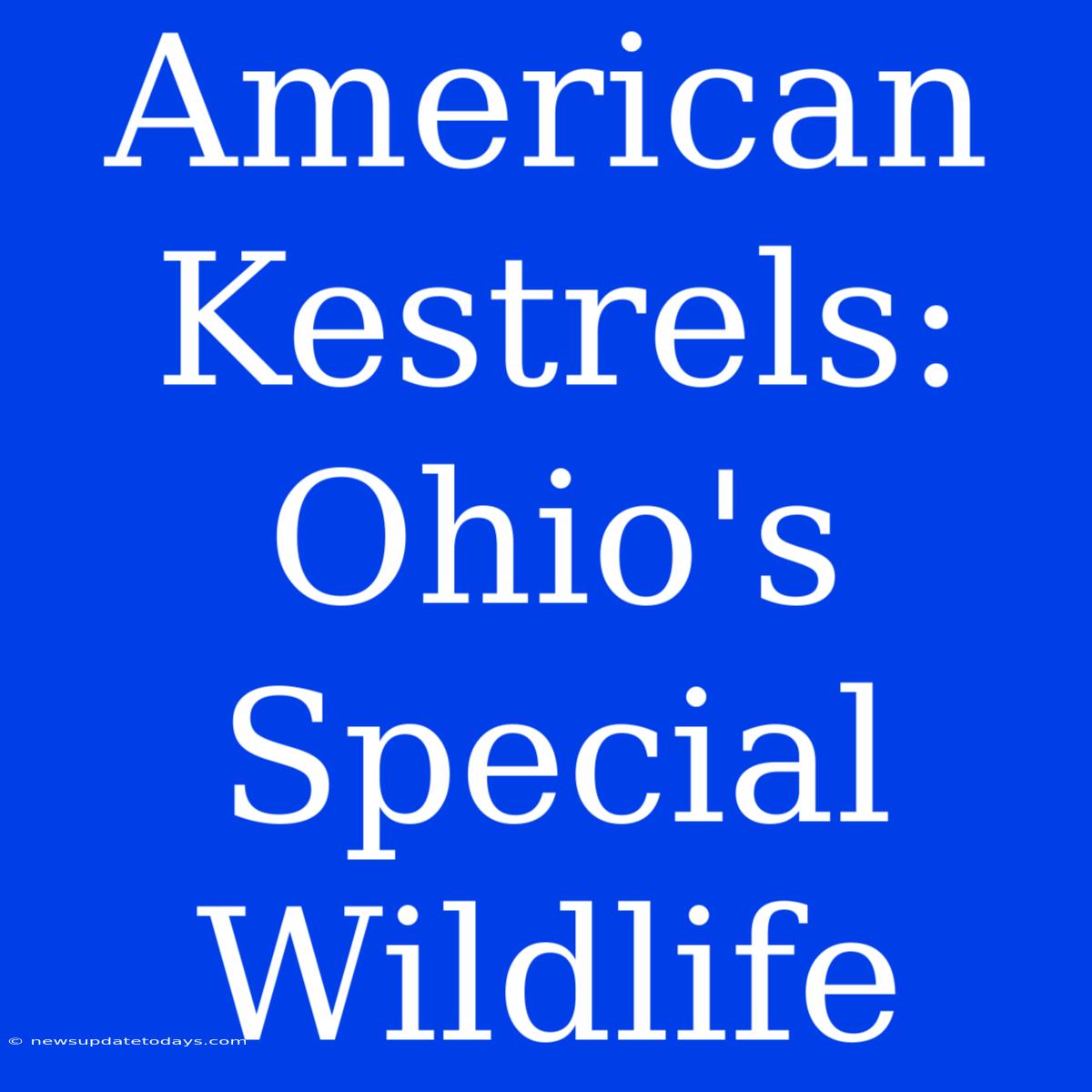American Kestrels: Ohio's Feathered Jewels
American Kestrels, Ohio's smallest falcon, are a captivating sight, their vibrant plumage a splash of color against the state's diverse landscapes. These miniature avian hunters play a vital role in Ohio's ecosystem, and understanding their presence is key to appreciating Ohio's rich biodiversity. This article delves into the fascinating world of American Kestrels in Ohio, exploring their habitat, behavior, conservation status, and how you can contribute to their protection.
Habitat and Distribution in Ohio
American Kestrels are found throughout Ohio, inhabiting a variety of habitats including grasslands, fields, and open woodlands. They favor areas with scattered trees or shrubs, providing perching opportunities for hunting and nesting. Proximity to water sources is also a crucial factor in their habitat selection. You're likely to spot them along roadsides, in agricultural lands, and even in urban parks with suitable perching spots. However, habitat loss due to urbanization and agricultural intensification poses a significant threat to their populations in the state.
Hunting Habits and Diet
These agile hunters are masters of aerial acrobatics, employing a unique hunting strategy. They often hover in mid-air, scanning the ground for prey, then swiftly swoop down to capture their meal. Their primary diet consists of insects, particularly grasshoppers, crickets, and beetles. However, they are opportunistic hunters, also preying on small rodents, lizards, and even other birds. Their exceptional eyesight is instrumental in their hunting prowess, allowing them to spot even the smallest movements from considerable heights.
Breeding and Nesting Behavior
American Kestrels typically nest in cavities, often utilizing natural tree hollows or abandoned woodpecker holes. They may also readily adapt to artificial nest boxes, particularly in areas where natural cavities are scarce. The female lays a clutch of 4-7 eggs, which are incubated for approximately 28-30 days. Both parents participate in raising the young, providing food and protection until they fledge, usually around 30 days after hatching. Their nesting success, however, is often influenced by factors like predator presence and the availability of suitable nesting sites.
Conservation Status and Threats
While American Kestrels are not currently considered endangered in Ohio, their populations have experienced fluctuations in recent years. The primary threats include habitat loss and degradation, pesticide use, and collisions with vehicles. Furthermore, competition with other cavity-nesting birds can limit their breeding success. Effective conservation efforts require a multi-pronged approach addressing these issues.
How You Can Help Protect Ohio's American Kestrels
Even small actions can make a significant difference in the conservation of American Kestrels:
- Support habitat conservation: Advocate for the preservation of grasslands and open spaces crucial to their survival.
- Install nest boxes: Providing artificial nesting sites can increase breeding success, especially in areas with limited natural cavities.
- Reduce pesticide use: Opt for environmentally friendly pest control methods to minimize their impact on kestrel populations.
- Drive cautiously: Reducing vehicle speeds, particularly in areas known for kestrel activity, can help prevent collisions.
- Educate others: Spread awareness about the importance of American Kestrels and the threats they face.
By understanding and appreciating these remarkable birds, we can work together to ensure the continued presence of American Kestrels in Ohio's vibrant ecosystem for generations to come. Their vibrant presence serves as a testament to the beauty and fragility of Ohio's natural heritage.

